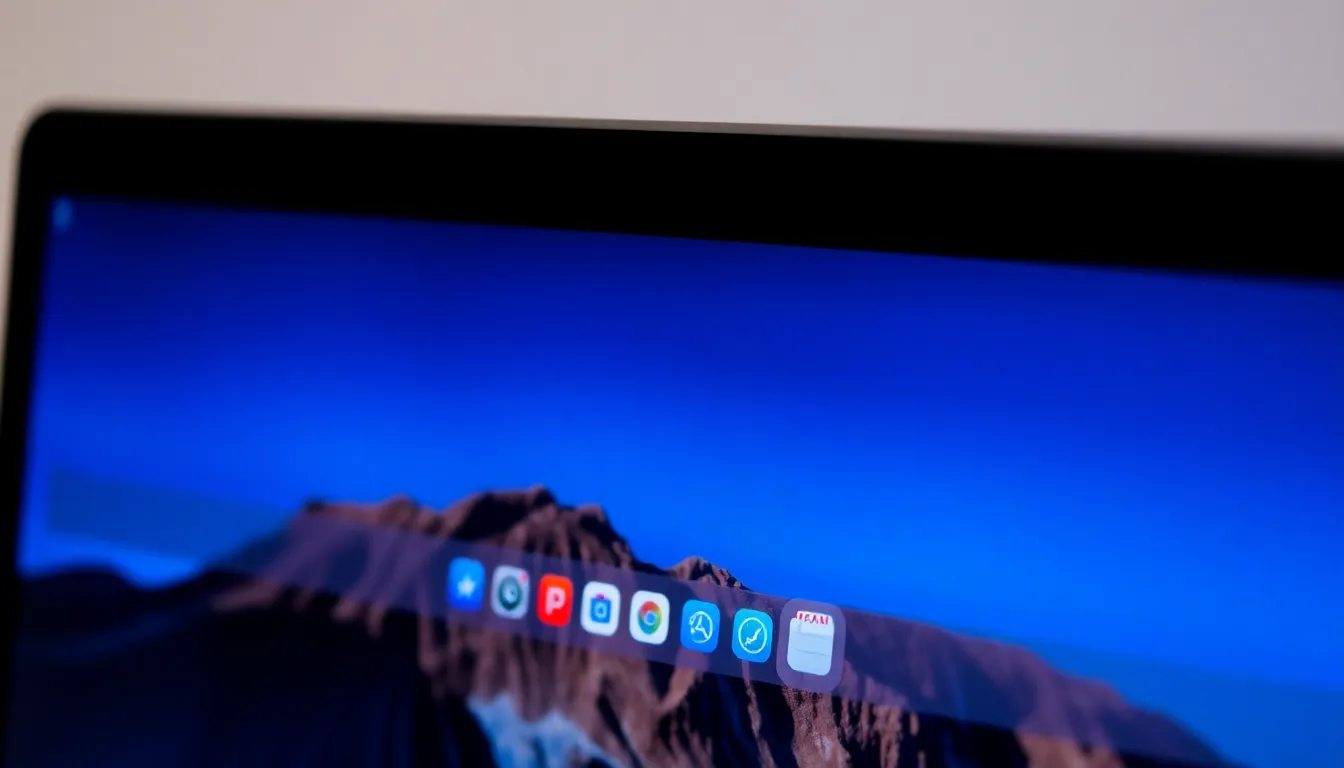Table of Contents
ToggleMacs are like that stylish friend who always knows the coolest shortcuts and tips to make life easier. Whether you’re a seasoned pro or just unboxing your first Mac, navigating this sleek machine can feel like learning a new language. But fear not! With a bit of guidance, you’ll be zipping through tasks like a tech wizard in no time.
Getting Started With Your Mac
Getting started with a Mac involves unboxing and setting it up properly. Users should ensure all components are included and familiarize themselves with basic functions.
Unboxing and Setting Up
Upon opening the box, the Mac, charger, and cables become visible. Carefully lift the Mac from the box and place it on a stable surface. After connecting the power adapter, plug it into an outlet. Next, turn on the Mac by pressing the power button. Configuration prompts will appear on the screen, guiding users through language selection and Wi-Fi network connections. Users should also set up their Apple ID during this process, allowing access to services like iCloud and the App Store.
First-Time Mac User Tips
Understanding the Dock helps streamline navigation. Users can customize it by adding frequently used applications. Learning keyboard shortcuts enhances efficiency; for instance, Command-C copies and Command-V pastes. Familiarity with the Finder allows users to manage files effectively. Exploring system preferences offers control over settings, such as trackpad sensitivity and display options. Regular practice with these elements aids in developing comfort and proficiency.
Navigating the macOS Interface

Understanding the macOS interface simplifies the user experience. Essential features such as the Dock and Menu Bar enhance accessibility and efficiency.
Understanding the Dock
The Dock provides quick access to applications and files. Users can drag and drop apps for easy launching. It’s possible to customize the Dock’s size and magnification settings via System Preferences. For example, to open frequently used applications like Safari or Mail, drag them to the right side of the Dock. Additionally, removing apps from the Dock requires right-clicking and selecting “Options.” Familiarizing with this tool aids in optimizing time spent navigating the Mac.
Using the Menu Bar
The Menu Bar runs across the top of the screen, containing various menus for application commands. Each application displays its own menu options when selected, enabling quick access to actions such as File, Edit, and View. Users can also find system notifications and battery status at the right side of the Menu Bar. To access Help, simply click on the Help menu for assistance with specific applications. Understanding these features fosters a smoother experience while using a Mac.
Essential Mac Features
Macs offer multiple features that enhance user productivity and experience. Familiarizing with these features proves essential for smooth navigation and efficient usage.
Finder Basics
Finder serves as the primary file management tool on a Mac. Users can easily browse files and folders through the Finder window. Favorites, Recents, and iCloud Drive reside in the sidebar for quick access. Customizing views like icons or list mode helps arrange files according to user preference. Search functionality allows users to locate items rapidly within the Finder. Tags can organize files effectively, supporting better management across projects. Each feature within Finder contributes to optimizing daily tasks on a Mac.
Spotlight Search
Spotlight Search acts as a powerful search tool across the macOS ecosystem. With a simple keystroke, users open Spotlight to find applications, documents, or web information instantly. Its ability to perform calculations or currency conversions adds to its versatility. Spotlight learns user habits, suggesting frequently accessed files, thereby saving time. This search feature even integrates with web searches, providing efficient browsing right from the desktop. Leveraging Spotlight ensures smoother navigation and faster access to essential information.
Productivity Tips for Mac Users
Utilizing productivity features can significantly enhance the Mac user experience. Emphasizing efficiency and ease of use, these tips help users optimize their workflow.
Keyboard Shortcuts
Keyboard shortcuts streamline tasks and save time. Common shortcuts include Command+C for copy, Command+V for paste, and Command+Z to undo actions. Users often find that learning a few more, such as Command+Tab for switching between applications and Command+Space for opening Spotlight, greatly improves navigation speed. In addition, users can customize shortcuts via System Preferences, tailoring them to specific needs. These shortcuts enable users to execute commands quickly, allowing for an uninterrupted workflow.
Multi-Desktop Functionality
Multi-desktop functionality enhances organization and focus. Users can create multiple desktops to separate different tasks or projects. To add a new desktop, users access Mission Control by swiping up with three fingers on the trackpad or pressing F3. Once in Mission Control, they can click the “+” icon in the top right corner. Switching between desktops is seamless, done with a simple four-finger swipe left or right. This feature helps minimize distractions and improves concentration on specific tasks, making it easier to manage workloads effectively.
Customizing Your Mac Experience
Customizing a Mac enhances the overall user experience, making it more intuitive and enjoyable. Personal preferences can significantly impact comfort and productivity.
System Preferences Overview
System Preferences serves as the control center for settings on a Mac. Users can access various options ranging from display settings to privacy controls. Adjusting display resolution and arranging multiple monitors can improve visibility. Users can also modify the desktop background, set up language preferences, and manage notifications from this section. The keyboard and trackpad settings can be tailored for better responsiveness. Additionally, configuring energy saving options helps optimize battery life. Every change contributes to a more personalized experience tailored to individual needs.
Customizing the Desktop
Customizing the desktop allows users to create a workspace that reflects their style. Users can alter the wallpaper with personal images or select dynamic wallpapers that change throughout the day. Arranging Dock items lets individuals prioritize frequently used applications, improving accessibility. Widgets can be added for at-a-glance information like weather updates or calendar events. Hiding desktop icons enhances visual clarity for a cleaner look. Users can create stacks to organize files neatly, maintaining an orderly desktop environment. By implementing these changes, the desktop transforms into a functional and visually appealing workspace.
Troubleshooting Common Issues
Users may encounter common issues when using their Mac. Fortunately, several effective troubleshooting methods exist to address these challenges.
Resetting the SMC and PRAM
To reset the System Management Controller (SMC), shut down the Mac. Hold the Shift, Control, and Option keys alongside the power button for ten seconds. Release these keys, then press the power button again to start the Mac. Resetting the Parameter RAM (PRAM) involves shutting down, then holding the Command, Option, P, and R keys while powering on. Continue to hold the keys until the startup sound plays twice. These resets can resolve issues related to power, display, and startup.
Safe Mode and Recovery Options
Booting in Safe Mode offers a diagnostic approach for troubleshooting. Hold the Shift key while starting the Mac, which prevents certain software from loading and performs checks on the startup disk. Recovery Mode serves as an alternative for repairing the disk and reinstalling macOS. Access this mode by holding Command and R during startup. Users can then run Disk Utility or reinstall the operating system if needed.
Mastering a Mac can transform one’s computing experience into a seamless and enjoyable journey. By following the tips and techniques outlined in the article, users can unlock the full potential of their device. From setting up the initial configurations to customizing the interface, every step contributes to a more personalized and efficient workspace.
Embracing the various features like Finder and Spotlight Search can significantly enhance productivity. Users will find that learning keyboard shortcuts and utilizing multi-desktop functionality leads to smoother task management. With a little patience and practice, anyone can navigate their Mac with confidence and ease, making it an indispensable tool for both work and leisure.





